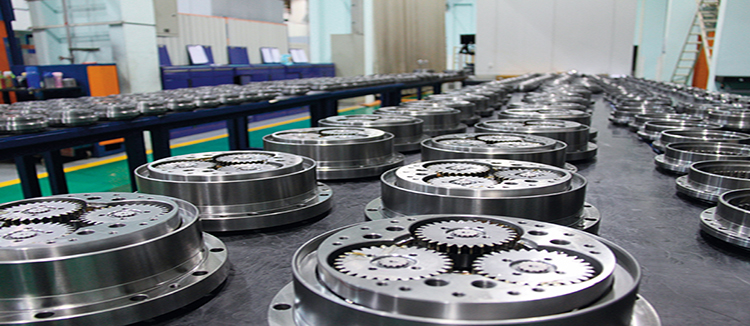Unlocking the Potential of Industrial Robotic Arm: Efficiency and Precision in Automation
Industrial automation has been revolutionized by the advent of the Industrial Robotic Arm, a versatile and powerful tool that has transformed the way we approach manufacturing, assembly, and other industrial processes. These robotic arms are not just mechanical limbs; they are the embodiment of advanced technology, precision engineering, and the relentless pursuit of efficiency in the modern industrial landscape.
The Industrial Robotic Arm is designed to perform tasks that are repetitive, dangerous, or require high levels of precision. They are equipped with multiple degrees of freedom, allowing them to move in a manner similar to human arms, but with greater strength and accuracy. This capability is crucial in industries where precision and consistency are paramount, such as in the automotive, electronics, and pharmaceutical sectors.
One of the key advantages of the Industrial Robotic Arm is its ability to work tirelessly without the need for breaks, significantly increasing productivity. Unlike human workers, these arms do not suffer from fatigue, which means they can maintain a consistent level of performance throughout their operational hours. This not only boosts output but also reduces the risk of errors that can occur due to human fatigue.

Another significant benefit of the Industrial Robotic Arm is its adaptability. With the right programming and accessories, these arms can be used for a wide range of tasks, from welding and painting to assembly and packaging. This flexibility allows companies to invest in a single technology that can be repurposed as needed, reducing costs and streamlining operations.
The precision of the Industrial Robotic Arm is unmatched. They can be programmed to execute tasks with micron-level accuracy, which is essential in industries where even the slightest deviation can lead to product failure or safety issues. This level of precision is particularly valuable in sectors like aerospace and medical device manufacturing, where high standards of quality control are non-negotiable.
Furthermore, the Industrial Robotic Arm is a key player in the field of collaborative robotics, or "cobots." These are designed to work alongside human workers, taking on tasks that are physically demanding or pose a risk to human health. The integration of cobots into the workforce not only enhances safety but also allows human workers to focus on more complex tasks that require creativity and decision-making skills.
Investing in an Industrial Robotic Arm is not just about immediate gains in productivity and efficiency; it's also a strategic move towards future-proofing a business. As technology continues to advance, these arms are becoming smarter, with the ability to learn from their actions and improve over time. This means that the value of an Industrial Robotic Arm can increase as it becomes more adept at its tasks, offering a long-term return on investment.

However, the implementation of an Industrial Robotic Arm is not without its challenges. Companies must consider the initial cost of the equipment, as well as the costs associated with training staff to operate and maintain these systems. Additionally, there may be resistance from workers who fear that robots will replace their jobs. It's crucial for companies to communicate the benefits of automation and how it can lead to new job opportunities and a more balanced work environment.
In conclusion, the Industrial Robotic Arm is a powerful tool that has the potential to reshape the future of industrial work. Its ability to perform tasks with precision, efficiency, and耐力 makes it an invaluable asset in the quest for a more automated and technologically advanced manufacturing sector. As we continue to push the boundaries of what is possible with these arms, the Industrial Robotic Arm will undoubtedly play a central role in the evolution of industry.










